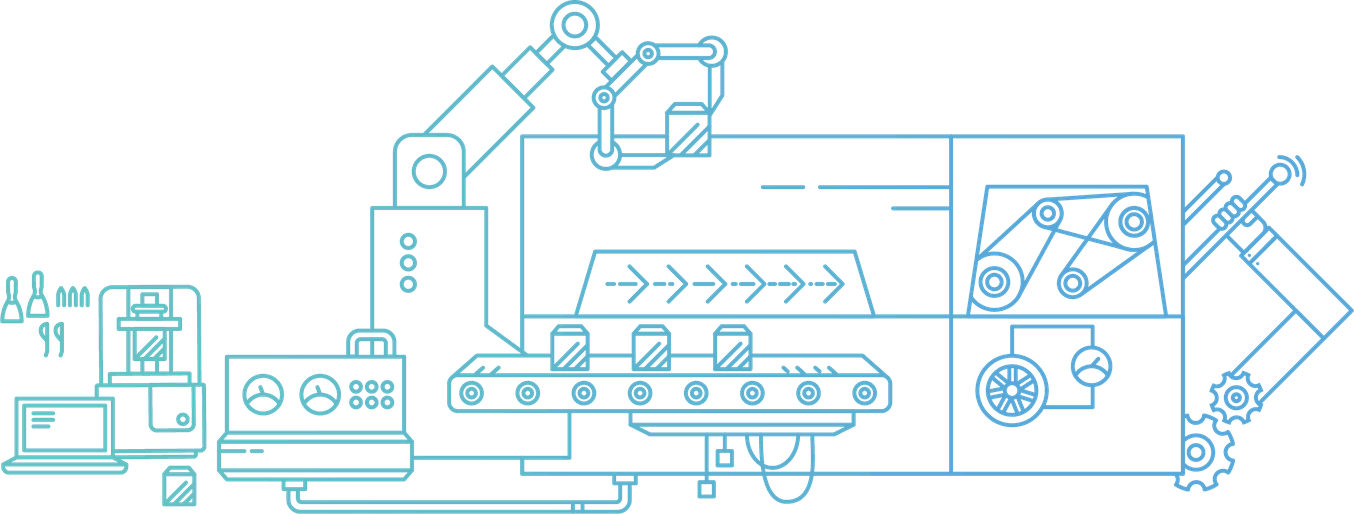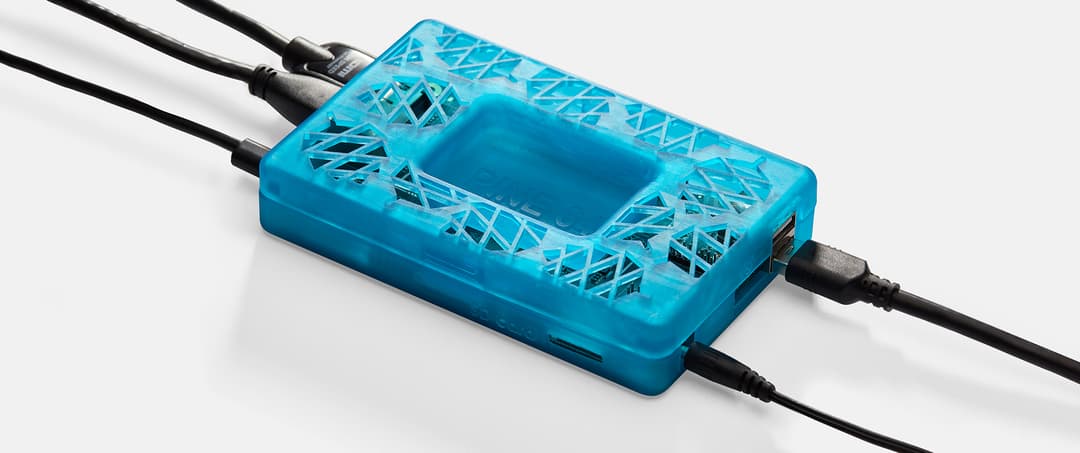
Product assembly is a big factor in production time, labor cost, and complexity. 3D printing can be used to consolidate multiple parts into a single part that couldn’t be produced conventionally, but most products still need at least some assembly. Fasteners are fiddly and snap-fits are fragile. An emerging solution: advanced adhesives, applied with automated machinery—a step toward fully digital assembly.
In episode 7 of the Digital Factory Podcast, we sit down with Michael Todd, vice president for innovation and new business development in the Henkel Adhesives group, to discuss how adhesives can be used to create entire assemblies out of 3D printed parts, and how different adhesives can address different applications.
The Digital Factory Conference is coming to Munich on May 14. Join executives from companies like Henkel, GE, BMW, and SAP to learn strategies for digital transformation in manufacturing. Visit digitalfactory.xyz to see the program, and register before April 4 for a €50 discount.
Play the full podcast below to hear about:
- The limitations of off-the-shelf adhesive solutions for advanced problems
- Some of the strangest chemistries and conditions Henkel has had to solve for
- What an adhesives expert would choose from the adhesives shelf at the hardware store in a pinch
Inside Developing Advanced Adhesives
On Henkel’s Chemistry-Agnostic Approach to Adhesives
“We consider ourselves chemistry agnostic. What we like to say when we go to a customer is that we're not looking to solve a problem with an epoxy or with a silicone. Rather, we're looking at what material properties are needed in order to address the issue that a customer has. Depending on the environment, depending on the mechanical requirements, we start to figure out what types of chemistries we apply to it.”
On the Limitations of Working With Standard Adhesives
“It would make my life really easy if these were standard products. Realistically, that almost never happens. As an example, I've spent more than a decade in the electronics and semiconductor materials space. In that part of our business, far more than 50% of the products that are sold to our major customers are designed and developed and sold exclusively to one customer, usually just for one application.
We call it mass customization, meaning, in a way, the same thing that we try to do with 3D printing, which is give customers the ability to self-design their parts. In reality, we're working with our customers on the adhesives side and customizing the materials to fit their applications. It allows them to have much wider design freedom in the applications that they're tackling if they don't have to just stay within a very limited range of material properties of a standard adhesive off-the-shelf.”

On the Differences Between Adhesives and Coatings
“An adhesive is usually between two surfaces. So simply because of its physical condition, being sandwiched between two surfaces, we typically use different types of chemistries. Imagine if you're applying the material and one surface is exposed to oxygen. Now you have questions of oxygen inhibition. All different types of chemistries have problems with oxygen inhibition, meaning that at the surface, which is exposed to the oxygen, maybe you don't have as quick a cure or maybe not even a full cure.
That can lead to things like tackiness or optical imperfections on the surface. With an actual surface coating, maybe if you really get down into the basic chemistry, you might say, “Hey, these are pretty similar to a traditional adhesive.” But in fact, they've been designed to be applied with one surface exposed.”
On Developing Adhesives to Withstand Mars
“You can find our adhesives and sealants on the Mars Rover today. And what was fascinating about that was imagining the heat, the durability requirements there were extraordinary. Sure enough, you put a couple of real smart chemists in the lab and work with the engineers at NASA and they came up with materials that I'm pretty sure are still there, still functioning on those devices.
And I mentioned the heat, but imagine the cold. You're really going through absolute extremes and looking at extreme mismatches and coefficient and thermal expansion. So toughness is important, elasticity–it's really an amazing environment.”

Tools: The Best All-Purpose Glue
“If you go to the hardware store, I'm sure sometimes you're dumbfounded when you look the racks and wonder wow, all these glues. Do I pick a cyanoacrylate, do I pick epoxy? How about a hot melt? And I'll be honest with you, they all have their applications. But, there's one that I have in my toolbox that I use all the time, and it's actually a general purpose glue. It's something was developed here at Henkel a few years ago. It's a combination of two different chemistries: it has a cyanoacrylate type of quick cure, but also a longer-term mechanical cure mechanism in the single material.
It's called 60 Second All-Purpose Glue. It's quick, but it's also durable. And I found that it works on a wide variety of applications. And I'll be the first to say as a long-time adhesives developer,there probably will never be one adhesive that works on everything. But this one around the house, I love it. It works.”
More Lessons from Manufacturing Innovators
The Digital Factory Conference is coming to Munich on May 14! Visit The Digital Factory for an archive of talks, podcasts, and more from experts at the forefront of digital manufacturing, and to register to attend our next event.
The Digital Factory Podcast is hosted by Jon Bruner, produced by Alyce Currier, and edited by Inky Stainsworth.


